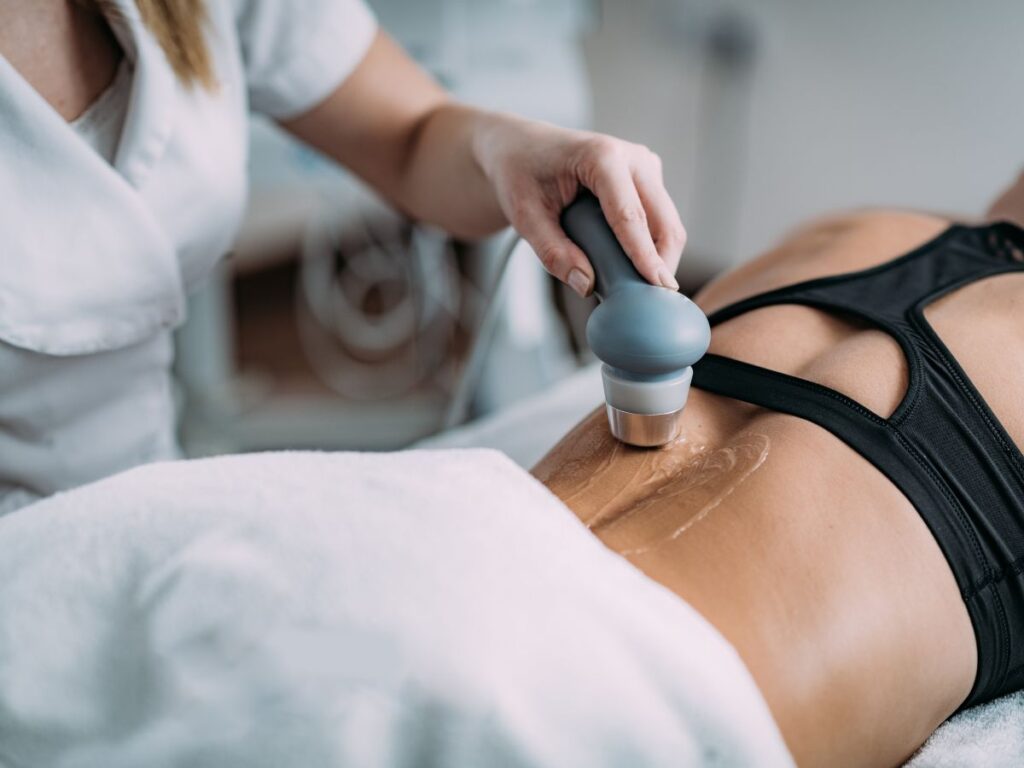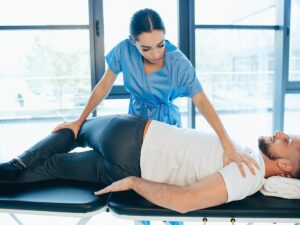Understanding Lower Back Pain
Lower back pain is one of the most pervasive musculoskeletal complaints, often impacting daily activities like walking, sitting, or lifting objects. The lumbar region bears much of the body’s weight, making it highly susceptible to strain, degeneration, and injury over time. Postural issues, muscle imbalances, repetitive motions, and sudden traumas can all contribute to discomfort. Without proper intervention, acute pain can evolve into chronic conditions that hamper mobility and reduce quality of life. Physical therapy stands out as a core, noninvasive strategy to address these problems, targeting both symptoms and root causes. By focusing on posture, muscle strength, flexibility, and lifestyle modifications, therapists help patients break the cycle of pain and reduce their reliance on medications or invasive procedures.
Common Causes of Lower Back Pain
Although back pain can originate from various sources, several factors frequently appear:
- Muscle Strains: Overexertion or sudden twisting can result in microscopic tears that cause localized stiffness and tenderness.
- Degenerative Disc Disease: Age-related wear and tear on spinal discs diminishes their shock-absorbing function, often leading to chronic discomfort.
- Herniated Discs: When the inner nucleus of a disc bulges out, it may press against nerves, causing radiating pain or numbness.
- Spinal Stenosis: Narrowing of the spinal canal places increased pressure on nerves, yielding pain, weakness, or tingling.
- Poor Posture: Chronic slouching or improper alignment while sitting or standing can strain muscles and ligaments in the lumbar area.
Identifying the underlying contributors is vital for an effective recovery plan. Physical therapists often collaborate with other healthcare professionals to rule out serious pathologies such as fractures or infections. This ensures a precise diagnosis, laying the groundwork for targeted, individualized intervention.
Why Physical Therapy Is Effective
Physical therapy employs a holistic, patient-centered approach to relieve lower back pain. Instead of masking symptoms with medications, it tackles the mechanical and functional issues that sustain discomfort. Therapists evaluate posture, gait, and muscular imbalances to find contributing factors. Treatment typically blends exercises to strengthen the core and back muscles, manual therapy to enhance joint mobility, and education on ergonomics or posture. By cultivating better body awareness, patients can protect the lower back from future strains. In many cases, a tailored regimen also reduces dependency on painkillers, which can carry risks of side effects or addiction. Because each patient’s situation is unique, therapy plans are continuously adjusted based on progress, ensuring a safe and steady recovery.
Initial Assessment Process
Before formulating a therapy program, a physical therapist conducts a thorough evaluation. This includes discussing your medical history, reviewing any diagnostic images (like X-rays or MRIs), and performing functional tests to gauge strength, flexibility, and pain triggers. You might be asked to perform simple movements—such as bending forward or extending backward—to identify movement patterns that exacerbate discomfort. Therapists also assess posture in seated, standing, and walking positions. Any red flags, such as severe nerve involvement, sudden incontinence, or unexplained weight loss, may prompt referral to a specialist. By gathering detailed insights, therapists customize exercises and modalities to your specific needs, maximizing efficiency and safety from the outset.
Core Exercises for Lower Back Pain
A strong, stable core is essential for protecting the lumbar spine. Physical therapists often incorporate several fundamental exercises, including:
- Bridges: Lying on your back with knees bent, lift your hips while keeping the shoulders grounded. This move strengthens glutes and stabilizes the pelvis.
- Bird Dog: Start on hands and knees, extending one arm forward and the opposite leg back. Focus on engaging the abdominals to maintain a neutral spine.
- Modified Planks: Whether done on the knees or with a full plank position, this exercise boosts endurance in the core and lower back muscles.
- Pelvic Tilts: Lying flat, gently tilt the pelvis to flatten the lower back against the floor, then relax. This helps develop lumbar awareness and control.
- Wall Sits: Standing with your back against a wall, slide down into a seated position to activate quadriceps and core synergy.
Therapists tailor reps, sets, and exercise difficulty to suit each patient’s tolerance. Over time, they may introduce variations or resistance to stimulate further strength gains. Consistency between therapy sessions and home practice is key; regular engagement typically yields noticeable improvements in a matter of weeks.
Manual Therapy and Additional Modalities
In conjunction with exercise, many therapists employ manual techniques to ease lower back pain. These can include soft tissue mobilization, spinal manipulation, and passive stretching. Some clinics offer modalities such as ultrasound, electrical stimulation, or heat and ice therapy. These treatments aim to reduce inflammation, improve blood circulation, and expedite tissue repair. Traction devices may also be used to gently decompress the spine, alleviating nerve pressure in conditions like herniated discs. While not every patient requires these adjuncts, they can be especially beneficial for those suffering from severe or persistent pain. Regular reassessments enable the therapist to gradually reduce reliance on passive modalities as active exercises become more effective.
The Role of Dr. Elham in Lower Back Rehabilitation
Dr. Elham brings extensive expertise in applying evidence-based physical therapy principles to lower back pain. She carefully evaluates posture, muscle balance, and lifestyle factors to pinpoint contributors. Her approach involves gentle yet targeted interventions, including corrective exercises and hands-on therapy, to restore spinal alignment and enhance functional strength. By communicating openly with patients and regularly monitoring progress, Dr. Elham adjusts treatment plans to reflect evolving needs and goals. For those seeking a comprehensive program, Dr. Elham’s office often provides educational resources on posture, ergonomics, and self-management strategies, empowering patients to maintain results long after formal therapy concludes. For a deeper look at her methods, you can explore our Physical Therapy for Lower Back Pain resource.
Ergonomics and Posture Education
Prolonged sitting, slouching, or repetitive bending movements can compound lower back stress. Hence, physical therapy typically includes education on correct body mechanics. Therapists might demonstrate how to adjust office chairs, computer screens, or car seats to maintain a neutral spine. They also emphasize safe lifting techniques: bending at the knees, engaging core muscles, and keeping objects close to the body. Simple changes—like taking brief standing breaks every 30 minutes at a desk job—help counteract the effects of prolonged immobility. Over time, cultivating better posture and ergonomic habits reduces aggravation of weak or healing tissues, speeding recovery and minimizing flare-ups.
Complementary Approaches
While physical therapy alone can be highly effective, combining it with other treatments sometimes accelerates results. Chiropractic adjustments may help realign vertebrae, further reducing pain or nerve impingement. Massage therapy relieves muscular tension and boosts circulation, enhancing the flexibility needed for therapeutic exercises. Acupuncture, too, may reduce inflammation and modulate pain signals in certain individuals. Dr. Elham often collaborates with different specialists to create well-rounded recovery programs for complex cases. Communication among providers ensures each modality supports the overarching goal of safe, efficient, and enduring relief from lower back pain.
Home Exercise and Self-Care
To maintain gains achieved during therapy sessions, consistent at-home practice is vital. Many therapists issue printed or digital tutorials featuring the exercises introduced in the clinic. These routines could be as brief as 10-15 minutes a day but have a profound impact on reinforcement. Additionally, daily habits—like using a lumbar support cushion, investing in a supportive mattress, or applying ice after strenuous activity—complement the formal therapy. Patients may also track pain levels, noting any triggers like prolonged sitting or heavy lifting. This record helps therapists modify routines, ensuring the plan remains effective. By taking ownership of one’s recovery, patients often see a reduction in setbacks and faster progression to higher-functioning activities.
Preventing Reinjury
Once lower back pain subsides, prevention becomes the central focus. Regular exercise, focusing on core strength and overall flexibility, can fortify the spine’s support structure. Engaging in activities like swimming, walking, or low-impact aerobics keeps blood flowing to the lumbar region, aiding in tissue health. Maintaining a healthy weight also helps, as excess pounds place increased load on spinal discs and joints. Periodic checkups with a physical therapist or sports medicine professional can catch minor issues before they escalate. Should a recurrence occur, seeking prompt care often halts a minor strain from becoming a chronic ordeal. By integrating self-awareness, consistent exercise, and smart ergonomics, patients can enjoy sustained relief.
Combining Physical Therapy with Lifestyle Changes
Lower back pain rarely exists in isolation; it can reflect broader lifestyle patterns such as sedentary behavior, excessive stress, or poor nutrition. Therapists might recommend complementary steps like stress management techniques—yoga, meditation, or breathing exercises—to lessen muscle tension exacerbated by anxiety. Monitoring daily water intake and balanced dietary habits supports spinal disc hydration and tissue repair. Proper sleep hygiene, including a comfortable mattress and pillow alignment, plays a crucial role as well. These minor yet meaningful adjustments, when combined with structured physical therapy, form a unified plan that addresses both the physical and psychosocial elements of back pain.
Recovery Timeline and Expectations
Every individual’s lower back rehabilitation timeline varies according to the severity of the injury, age, and overall health. Some patients with mild muscle strains may see noticeable improvement within 2-4 weeks of starting therapy. More complex conditions—like herniated discs or chronic degenerative changes—often require longer durations, sometimes spanning 8-12 weeks or more. The process typically begins with reducing inflammation and pain, then progresses to strengthening exercises aimed at returning to full function. Throughout, therapists track key markers such as range of motion, pain scores, and daily activity levels to gauge effectiveness. By setting realistic milestones and maintaining consistent attendance, most patients achieve significant functional gains and fewer bouts of pain.
When to Seek Help
If your lower back pain persists beyond a couple of weeks, grows more intense, or radiates into the legs, it’s wise to consult a medical professional. Signs like numbness, tingling, or bladder dysfunction can indicate serious nerve involvement, warranting an immediate evaluation. A physician can rule out fractures or severe spinal abnormalities before referring you to physical therapy. Early intervention often shortens recovery times by preventing minor strains from escalating into chronic conditions. Should you suspect that posture or repetitive motions aggravate your discomfort, scheduling a physical therapy assessment can confirm these connections and guide corrective measures. By acting promptly, you’ll be on a faster path to relief and restored mobility.
Take the Next Step
Physical therapy plays a pivotal role in easing lower back pain, targeting functional deficits and guiding lifestyle modifications that yield long-term benefits. Sessions blend corrective exercises, manual interventions, and educational insights, all personalized to your needs. Dr. Elham emphasizes attentive, holistic care—striving not just to relieve immediate symptoms but to fortify the back against future strains. Whether you face sporadic aches or an ongoing condition, consider exploring our Physical Therapy for Lower Back Pain page for in-depth guidance. With consistency, collaboration, and a proactive mindset, you can reclaim comfort, mobility, and confidence in daily life.








